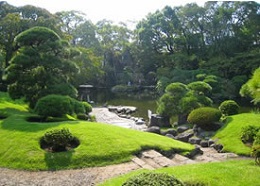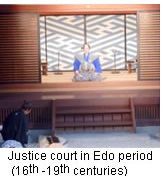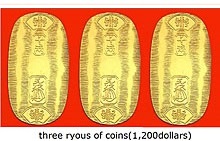Yamaguchi and Associates presents some cases related to the intellectual properties in Japan such as patent, design, trademark and unfair competition.
Why we think it is important to show people in Western countries intellectual property cases in Japan?
First of all, please observe the following pictures of a Japanese garden and an English garden.


There are significant differences between these gardens. Now you may be wondering: “what the differences have to do with intellectual property cases?” In fact, they have everything to do with.
Historically speaking, Japanese people lived by only agriculture without any hunting background.
Agricultural people tend to live in the same land for generations. For this reason, communities have been created spontaneously without necessity of creating one intentionally.
Consequently, a peaceful world has been created where there is no need to make any contract, agreement, discussion or argument, and confrontations are avoided, because everybody is supposed to share the same ideas and values.

Also, by the nature of agricultural work, it is difficult to change the outcome through human efforts. As a matter of course, people have to accept nature as it is, respect the power and presence, and find truth, goodness and beauty in nature.
Such a phenomenon is represent by the above Japanese garden.

The Japanese character of distaste for conflicts and confrontations is also reflected in the justice system. For a long time, the Japanese court was reluctant to make a decision that would produce clear-cut winners and losers.
Instead, amicable settlement between parties in a dispute was regarded to be a better solution.
Among court decisions in the Edo period (from the 16th to 19th centuries) in Japan, there was a decision that three parties, that is, a plaintiff, a defendant and even a judge paid the same amount of money so that “three parties equally shared the loss in order to settle amicably” * and this episode has been handed down as a touching tale to this day.
In the present day, in the United States, for example, there are often the court decisions of awarding huge amounts of compensation for damage**, which sometimes drive a company that lost the case into dissolution, disregard of the fact that there are many employees and their families involved in the company. It seems such decisions are largely influenced by a system of “punitive damage” that does not exist in Japan. Also, there is data indicating that lawsuits by PAE (Patent Assertion Entity), which in itself does not implement an invention, have been increasing rapidly. This trend makes us wonder if an “either-or choice” is always a right choice in human society. In some cases, it may not be a bad idea to leave certain “ambiguities”.
I hope the following showcase of intellectual property decisions in Japan would help you to learn about the examples of decisions distinct from those in Europe and North America.
Sakuo Yamaguchi
Patent Attorney
Yamaguchi & Associates
* Equal share of loss among three partiesEqual share of loss among three parties
A carpenter came across a wallet left on a street of Edo (today’s Tokyo). In the wallet he found a personal seal, a note and three ryous of coins (an equivalent of 1,200 dollars). He took the wallet back to the owner as he could identify his name from the note.

The owner, who was a typical Edokko (a true native of Edo: Edokko was renowned for being gallant, tasteful, and excitable), proudly demonstrating that he had no attachment to the money, said to the carpenter: “I will take the note and the seal as they belong to me. But the three ryous are no longer mine but yours. So, take them home with you.”
The carpenter, on his part, was also a typical Edokko. He said: “What the hell, how can I take the money?” “You get off my back!” They got into a quarrel and a landlord had to come to intervene. After all, both of them were too proud to take the money that they took the case to court.
Even though a judge (his name was Ooka Echizen, a legendary judge of the Edo period for his excellent decisions) made a decision, both of them refused to take the money.
Then, the judge Ooka made a proposal. “Well then, let me keep these three ryous for now. Then, let me add one ryou coin to them to get a sum of four ryous. Out of the four, I will grant two ryous to each of you as a reward of your honest deeds.” Then, he went on to explain the reason of his proposal.
“If the carpenter did not return the money to the owner, he would have profited 3 ryous. If the owner received the returned money, he would have profited 3 ryous. If I (Judge Ooka) kept the money, I would have profited 3 ryous. Actually, I expended 1 ryou to distribute 2 ryous to each party. This way, all of us can equally share the loss of 1 ryou “.
** The patent infringement suit filed by Polaroid against Kodak took over 10 years to come to a decision of granting 100 billion yen compensation for damage as well as ordering an injunction. As a result, Kodak was forced to close the instant camera factory. It is said to have cost them several billions of yen just for attorneys’ fees.
